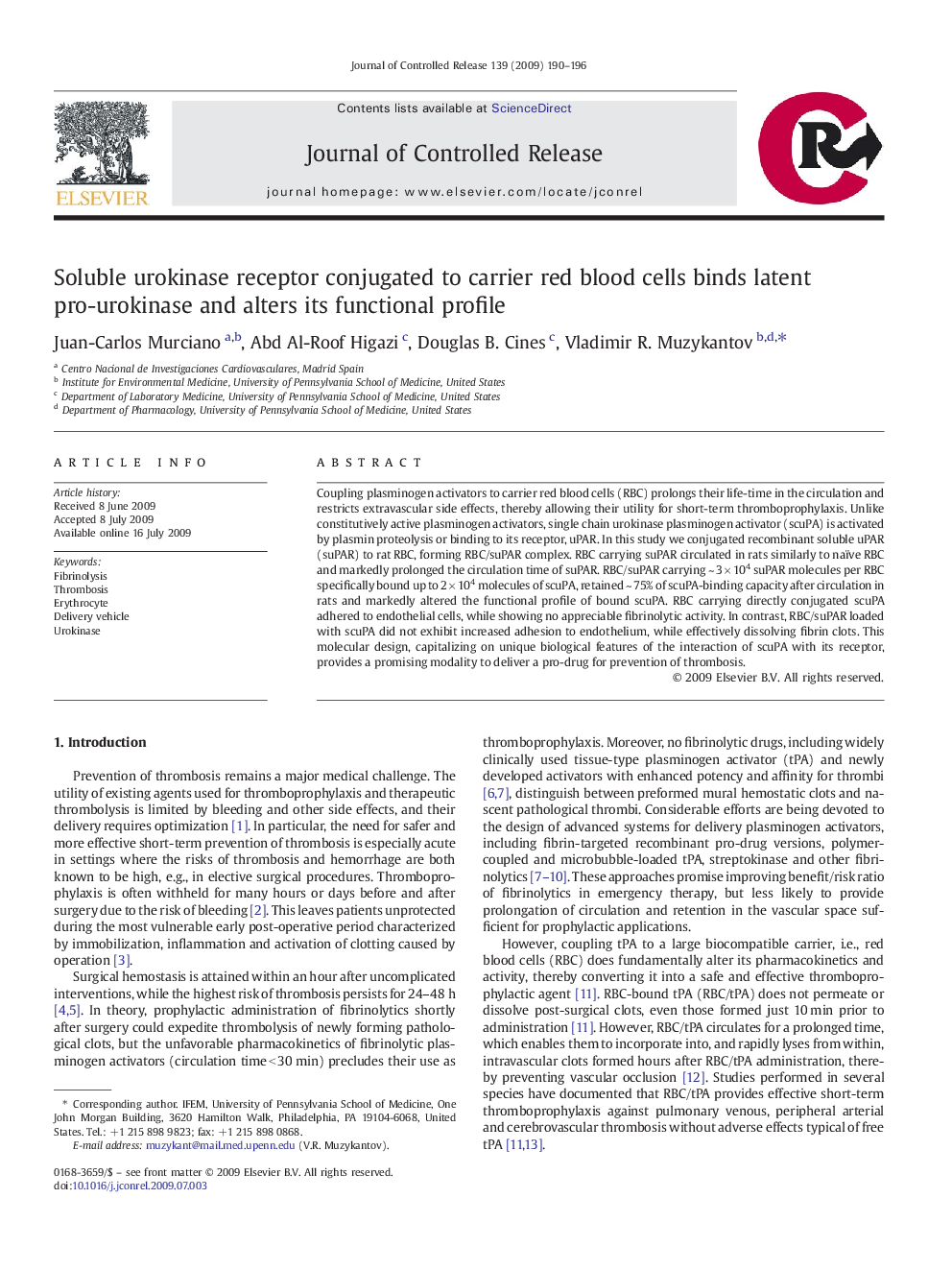| Article ID | Journal | Published Year | Pages | File Type |
|---|---|---|---|---|
| 1426179 | Journal of Controlled Release | 2009 | 7 Pages |
Coupling plasminogen activators to carrier red blood cells (RBC) prolongs their life-time in the circulation and restricts extravascular side effects, thereby allowing their utility for short-term thromboprophylaxis. Unlike constitutively active plasminogen activators, single chain urokinase plasminogen activator (scuPA) is activated by plasmin proteolysis or binding to its receptor, uPAR. In this study we conjugated recombinant soluble uPAR (suPAR) to rat RBC, forming RBC/suPAR complex. RBC carrying suPAR circulated in rats similarly to naïve RBC and markedly prolonged the circulation time of suPAR. RBC/suPAR carrying ~ 3 × 104 suPAR molecules per RBC specifically bound up to 2 × 104 molecules of scuPA, retained ~ 75% of scuPA-binding capacity after circulation in rats and markedly altered the functional profile of bound scuPA. RBC carrying directly conjugated scuPA adhered to endothelial cells, while showing no appreciable fibrinolytic activity. In contrast, RBC/suPAR loaded with scuPA did not exhibit increased adhesion to endothelium, while effectively dissolving fibrin clots. This molecular design, capitalizing on unique biological features of the interaction of scuPA with its receptor, provides a promising modality to deliver a pro-drug for prevention of thrombosis.
Graphical abstractUrokinase plasminogen activator (uPA) is rapidly cleared from blood by kidneys and liver, diffuses into tissues and interacts with uPA receptor (R) on endothelial cells (EC), which leads to side effects. RBC-bound suPAR circulates for a prolonged time, thereby favoring delivery into intravascular clots formed after prophylactic administration of RBC/suPAR and binds uPA thereby preventing its interaction with the EC receptor. Binging uPA to RBC/suPAR also activates uPA (not shown).Figure optionsDownload full-size imageDownload as PowerPoint slide
